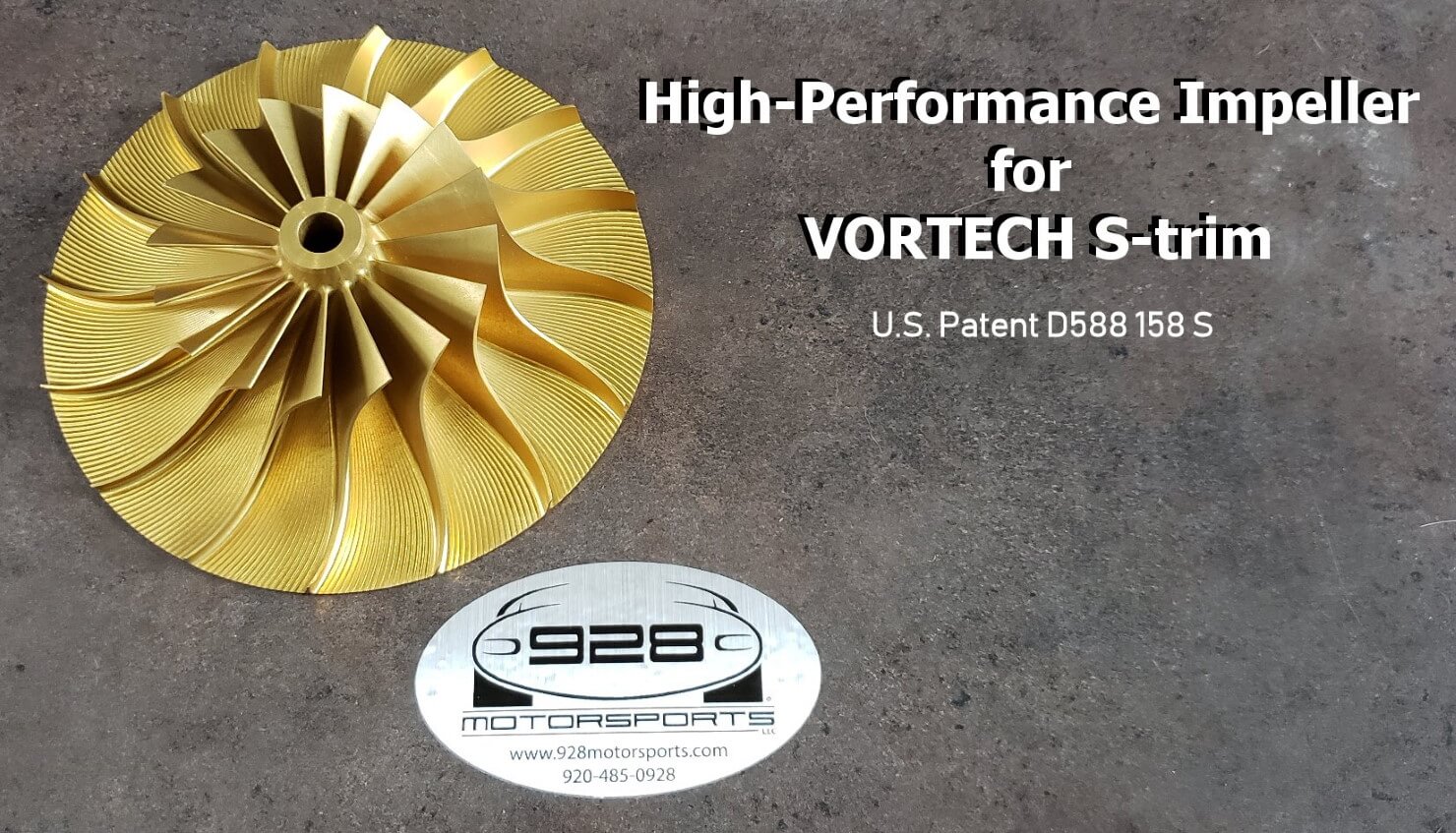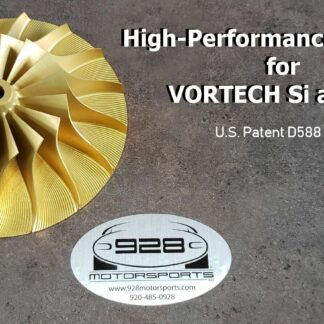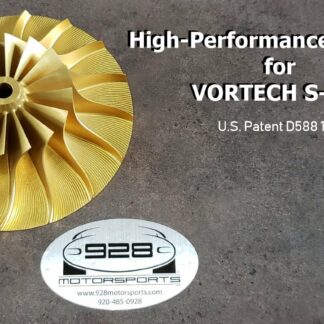Description
Application: Vortech® V1, V2 S-Trim Superchargers; and V2, V3 Sc-trim Superchargers.
Background: The impeller inside the Vortech® S-trim is made from a casting, and is not recommended to operate at speeds above 50,000 rpm.
Today’s V+ Impeller: Our V+ impeller is cut from billet on a 5-axis CNC mill, allowing us to use higher-strength alloys, and balance it to higher tolerances. We cut in more aggressive inlet curls and progressive vanes that are computer-designed for optimum flow inside the impeller housing. Each impeller is spin balanced to 0.006 grams/inch, and designed to operate up to 60,000 rpm. This Impeller has been more than a year in development and testing, and is so unique that we have US Patent D588158 on it.
On-car and on-bench testing reveals that our V+ impeller moves about 15% more air ACROSS THE ENTIRE RPM BAND when compared to the classic S-trim impeller. See actual data sheets below from dyno testing. We were able to bring the boost in much sooner, which translates into USEABLE HORSEPOWER. Now your S-Trim Vortech® can produce almost the same 1200 CFM as a T-Trim below 50,000 rpm (impeller speed) and even more if you spool it up to 60,000!
Simple Installation: You can change-out your impeller by removing the scroll and one nut on the end of the impeller shaft. Slide the old impeller out, slide ours on. We designed it specifically to fit within the Vortech® impeller housing without any modifications.
Balanced and Ready to Run: All of our impellers are balanced to 0.006 grams/inch at 60,000 rpm. That’s a very high standard that most manufacturers do not achieve. In addition, we have performed over-speed tests on our 60,000 rpm impellers to 72,000 rpm (a 20% safety margin for you) without damage. You can rest assured that your new impeller from 928 Motorsports will arrive ready to install right out of the box!
The Benefits of a Coated Impeller are:
- LESS HEAT TRANSFER The anodized surface coating is insulative and doesn’t transfer heat as quickly as the naked aluminum does. This works in both directions – in low boost applications the heat of the gear housing is transferred up the shaft into the impeller and this heats the air. That’s bad. In high boost applications, the heat in the compressor area is transferred down the shaft into the bearings. That is also bad.
- RESISTANCE TO ABRASION Small sand particles get through the air filter and they shot-peen the impeller, causing damage to the surface. A coated impeller is much more impact and scratch resistant than a naked one.
- RESISTANCE TO CORROSION Uncoated impellers oxidize and corrode causing drag and weakening the impeller. Coated impellers don’t.







